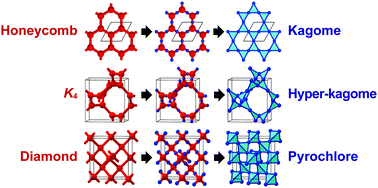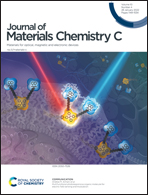Line graph theory reveals hidden spin frustration and bond frustration in molecular crystals with strong isotropy
Abstract
Graph theory has demonstrated that only three lattices, namely, honeycomb, K4, and diamond lattices, possess a strong isotropic property. It is also recognized that their line graphs correspond to kagome, hyper-kagome, and pyrochlore lattices, respectively, which are well known as spin frustration lattices. This relation suggests that the materials with the strong isotropic lattices possess “hidden” frustration. In this review article, after introducing the strong isotropy and the line graph transformation, we describe the spin frustration and formation of the spin liquid state in a honeycomb MOF, Cu3(HHTP), and in a molecule-based K4, (–)-NDI-Δ. We also report the unusual phase transitions in a molecule-based diamond, bpBDTDA, which are considered to result from bond frustration: specific periodical lattice distortions in the strong isotropic lattices are forbidden, in such a way that long-range antiferromagnetic orderings are forbidden in the spin frustration lattices.

- This article is part of the themed collection: Journal of Materials Chemistry C Recent Review Articles


 Please wait while we load your content...
Please wait while we load your content...
